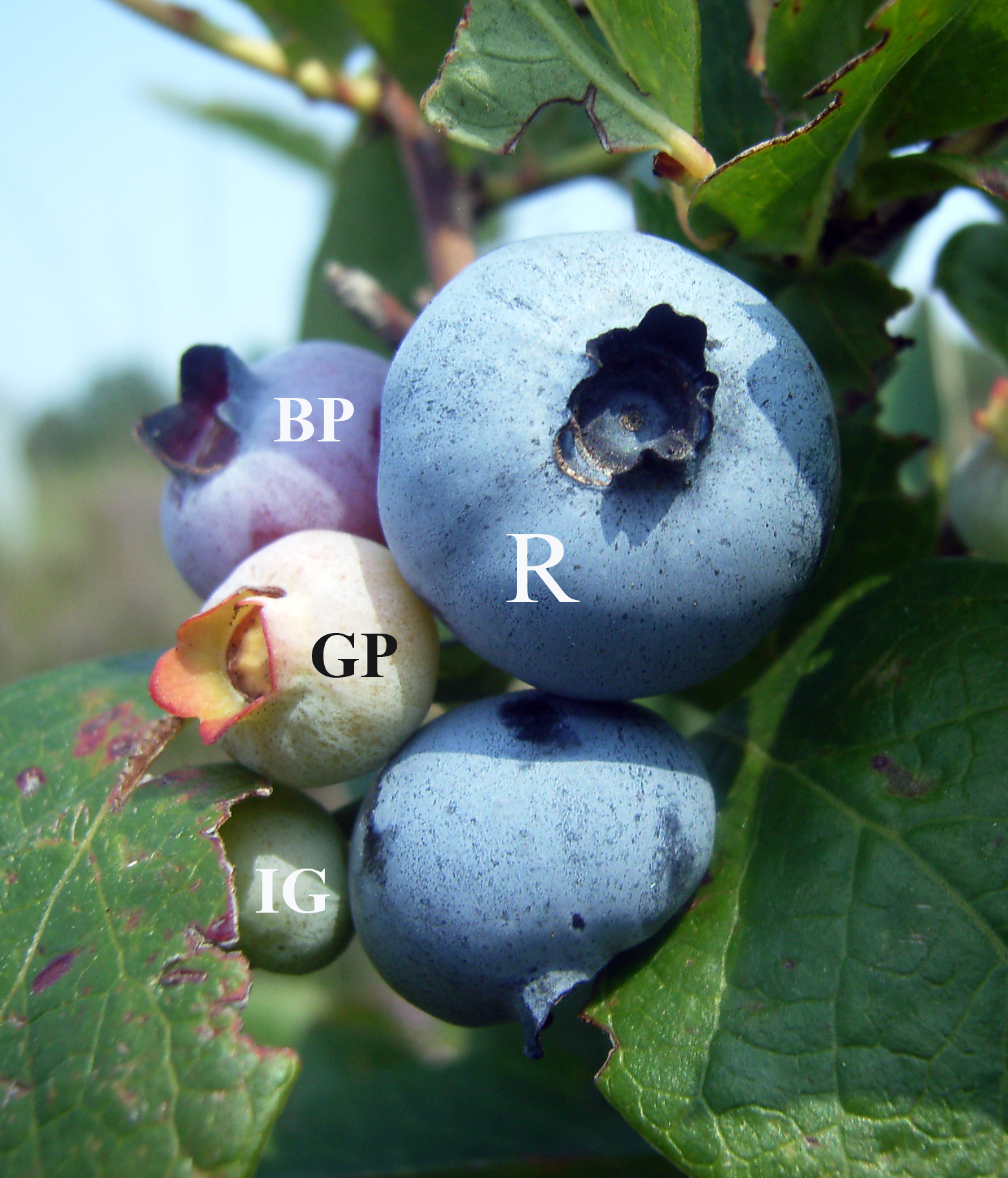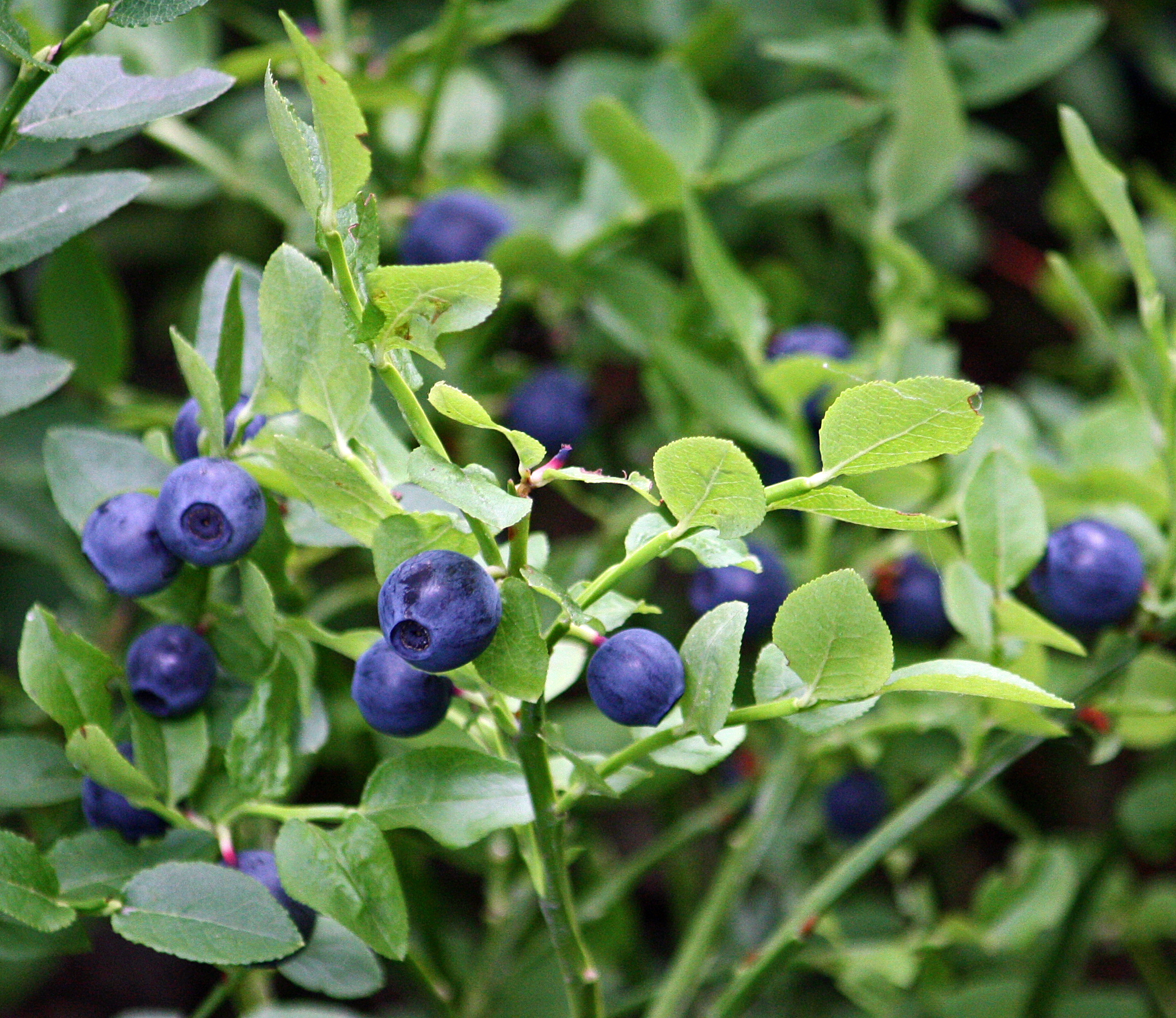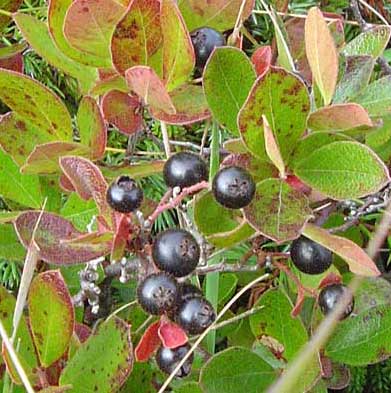|
Vaccinium
''Vaccinium'' is a common and widespread genus of shrubs or dwarf shrubs in the heath family (Ericaceae). The fruits of many species are eaten by humans and some are of commercial importance, including the cranberry, blueberry, bilberry (whortleberry), lingonberry (cowberry), and huckleberry. Like many other heath plants, they are restricted to acidic soils. Description The plant structure varies between species: some trail along the ground, some are dwarf shrubs, and some are larger shrubs perhaps tall. Some tropical species are epiphytic. Stems are usually woody. Flowers are epigynous with fused petals and have long styles that protrude from their bell-shaped corollas. Stamens have anthers with extended tube-like structures called "awns" through which pollen falls when mature. Inflorescences can be axillary or terminal. The fruit develops from an inferior ovary and is a four- or five-parted berry; it is usually brightly coloured, often red or bluish with purple juice. ... [...More Info...] [...Related Items...] OR: [Wikipedia] [Google] [Baidu] |
Blueberry
Blueberries are a widely distributed and widespread group of perennial flowering plants with blue or purple berries. They are classified in the section ''Cyanococcus'' with the genus ''Vaccinium''. Commercial blueberries—both wild (lowbush) and cultivated (highbush)—are all native to North America. The highbush varieties were introduced into Europe during the 1930s. Blueberries are usually prostrate shrubs that can vary in size from to in height. In the commercial production of blueberries, the species with small, pea-size berries growing on low-level bushes are known as "lowbush blueberries" (synonymous with "wild"), while the species with larger berries growing on taller, cultivated bushes are known as "highbush blueberries". Canada is the leading producer of lowbush blueberries, while the United States produces some 40% of the world's supply of highbush blueberries. Description Many species of blueberries grow wild in North America, including '' Vaccinium myrtilloi ... [...More Info...] [...Related Items...] OR: [Wikipedia] [Google] [Baidu] |
Lingonberries
''Vaccinium vitis-idaea'' is a small evergreen shrub in the heath family, Ericaceae. It is known colloquially as the lingonberry, partridgeberry, foxberry, mountain cranberry, or cowberry. It is native to boreal forest and Arctic tundra throughout the Northern Hemisphere. Commercially cultivated in the United States Pacific Northwest and the Netherlands, the edible berries are also picked in the wild and used in various dishes, especially in Nordic cuisine. Description ''Vaccinium vitis-idaea'' spreads by underground stems to form dense clonal colonies. Slender and brittle roots grow from the underground stems. The stems are rounded in cross-section and grow from in height. Leaves grow alternately and are oval, long, with a slightly wavy margin, and sometimes with a notched tip. The flowers are bell-shaped, white to pale pink, long. ''V. vitis-idaea'' begins to produce flowers from five to ten years of age. They are pollinated by multiple insect species, including '' ... [...More Info...] [...Related Items...] OR: [Wikipedia] [Google] [Baidu] |
Cranberry
Cranberries are a group of evergreen dwarf shrubs or trailing vines in the subgenus ''Oxycoccus'' of the genus ''Vaccinium''. Cranberries are low, creeping shrubs or vines up to long and in height; they have slender stems that are not thickly woody and have small evergreen leaves. The flowers are dark pink. The fruit is a berry (botany), berry that is larger than the leaves of the plant; it is initially light green, turning red when ripe. It is edible, but has an acidic taste. In Britain, ''cranberry'' may refer to the native species ''Vaccinium oxycoccos'', while in North America, ''cranberry'' may refer to ''Vaccinium macrocarpon''. ''Vaccinium oxycoccos'' is cultivated in central and northern Europe, while ''V. macrocarpon'' is cultivated throughout the northern United States, Canada and Chile. In some methods of classification, ''Oxycoccus'' is regarded as a genus in its own right. Cranberries can be found in acidic bogs throughout the cooler regions of the North ... [...More Info...] [...Related Items...] OR: [Wikipedia] [Google] [Baidu] |
Vaccinium Myrtillus
''Vaccinium myrtillus'' or European blueberry is a Holarctic realm, holarctic species of shrub with edible fruit of blue color, known by the common names bilberry, blaeberry, wimberry, and whortleberry. It is more precisely called common bilberry or blue whortleberry to distinguish it from other ''Vaccinium'' relatives. Description ''Vaccinium myrtillus'' is a small deciduous shrub that grows tall, heavily branched with upright, angular to narrow winged, green-colored branches that are glabrous. It grows rhizomes, creating extensive patches. The shrub can live up to 30 years, with roots reaching depths of up to . It has light green leaves that turn red in autumn and are simple and alternate in arrangement. The leaves are long and ovate to lanceolate or broadly elliptic in shape, with glandular to finely toothed margins; they are prominently veined on the lower surface. In winter, the foliage turns deep red and becomes deciduous. Small, hermaphrodite flowers with thick Pedicel ... [...More Info...] [...Related Items...] OR: [Wikipedia] [Google] [Baidu] |
Cranberries
Cranberries are a group of evergreen dwarf shrubs or trailing vines in the subgenus ''Oxycoccus'' of the genus ''Vaccinium''. Cranberries are low, creeping shrubs or vines up to long and in height; they have slender stems that are not thickly woody and have small evergreen leaves. The flowers are dark pink. The fruit is a berry that is larger than the leaves of the plant; it is initially light green, turning red when ripe. It is edible, but has an acidic taste. In Britain, ''cranberry'' may refer to the native species ''Vaccinium oxycoccos'', while in North America, ''cranberry'' may refer to '' Vaccinium macrocarpon''. ''Vaccinium oxycoccos'' is cultivated in central and northern Europe, while ''V. macrocarpon'' is cultivated throughout the northern United States, Canada and Chile. In some methods of classification, ''Oxycoccus'' is regarded as a genus in its own right. Cranberries can be found in acidic bogs throughout the cooler regions of the Northern Hemisphere ... [...More Info...] [...Related Items...] OR: [Wikipedia] [Google] [Baidu] |
Vaccinium Uliginosum
''Vaccinium uliginosum'' (bog bilberry, bog blueberry, northern bilberry or western blueberry) is a Eurasian and North American flowering plant in the heath family Ericaceae. Description ''Vaccinium uliginosum'' is a small deciduous shrub growing to tall, rarely tall, with brown stems (unlike the green stems of the closely related bilberry). The leaves are oval, long and wide, blue-green with pale net-like veins, with a smooth margin and rounded apex. The flowers are pendulous, urn-shaped, pale pink, long, produced in mid-spring. The fruit is a dark blue-black berry in diameter, with a white sweet flesh, ripe in late summer. Cytology is 2n = 24. Its fruit persists for an average of 26.1 days, and bears an average of 24.7 seeds per fruit. Fruits average 86.8% water, and their dry weight includes 38.4% carbohydrates and 3.9% lipids. Subspecies Three subspecies have been described, but not all authorities distinguish them: *''Vaccinium uliginosum'' subsp. ''microphyll ... [...More Info...] [...Related Items...] OR: [Wikipedia] [Google] [Baidu] |
Red Huckleberries
''Vaccinium parvifolium'', the red huckleberry, is a species of ''Vaccinium'' native to western North America. Description It is a deciduous shrub growing to tall with bright green shoots with an angular cross-section. The leaves are ovate to oblong-elliptic, long, and wide, with an entire margin. The nodding flowers appear singly in leaf axils. The flowers are yellow-white to pinkish, decumbent, bell-shaped, and long. The fruit is an edible red to orange berry (botany), berry in diameter. Cytology is 2n = 24. Distribution and habitat It is common in forests from southeastern Alaska and British Columbia south through western Washington (state), Washington and Oregon to central California. In the Oregon Coast Range, it is the most common ''Vaccinium''. It grows in moist, shaded woodlands. Ecology Birds, bears, and small mammals eat the berries. Deer and some livestock forage the foliage. Cultivation The species is cultivated in the specialty horticulture trade with l ... [...More Info...] [...Related Items...] OR: [Wikipedia] [Google] [Baidu] |
Bilberry
Bilberries () are Eurasian low-growing shrubs in the genus ''Vaccinium'' in the flowering plant family Ericaceae that bear edible, dark blue berries. They resemble but are distinct from North American blueberries. The species most often referred to is ''Vaccinium myrtillus'' L., but the term describes several other closely related species. Etymology and regional names The name "bilberry" appears to have a Scandinavian languages, Scandinavian origin, possibly from as early as 1577, being similar to the Danish word ''bølle'' for whortleberry with the addition of "berry". In Scandinavian languages, terms for bilberries have names that carry the meaning "blueberry": e.g. ''blåbär'' in Swedish and ''blåbær'' in Danish and Norwegian. The bilberry (especially ''Vaccinium myrtillus'') is generally known as blaeberry in Scottish and Northern English regional dialects, and whortleberry in southern England. Description Bilberries—which are native to Europe—are dif ... [...More Info...] [...Related Items...] OR: [Wikipedia] [Google] [Baidu] |
Huckleberry
Huckleberry is a name used in North America for several plants in the family Ericaceae, in two closely related genera: ''Vaccinium'' and ''Gaylussacia''. Nomenclature The name 'huckleberry' is a North American variation of the English dialectal name variously called 'hurtleberry' or 'whortleberry' () for the Vaccinium myrtillus, bilberry. In North America, the name was applied to numerous plant variations, all bearing small berries with colors that may be red, blue, or black. It is the common name for various ''Gaylussacia'' species, and some ''Vaccinium'' species, such as ''Vaccinium parvifolium'', the ''red huckleberry'', and is also applied to other ''Vaccinium'' species which may also be called blueberry, blueberries depending upon local custom, as in New England and parts of Appalachia. Description The plant has shallow, radiating roots topped by a bush growing from an underground stem. The berries are small and round, in diameter, and look like large dark Vaccinium angu ... [...More Info...] [...Related Items...] OR: [Wikipedia] [Google] [Baidu] |
Heath Family
The Ericaceae () are a family of flowering plants, commonly known as the heath or heather family, found most commonly in acidic and infertile growing conditions. The family is large, with about 4,250 known species spread across 124 genera, making it the 14th most species-rich family of flowering plants. The many well known and economically important members of the Ericaceae include the cranberry, blueberry, huckleberry, rhododendron (including azaleas), and various common heaths and heathers (''Erica'', ''Cassiope'', ''Daboecia'', and ''Calluna'' for example). Description The Ericaceae contain a morphologically diverse range of taxa, including herbs, dwarf shrubs, shrubs, and trees. Their leaves are usually evergreen, alternate or whorled, simple and without stipules. Their flowers are hermaphrodite and show considerable variability. The petals are often fused (sympetalous) with shapes ranging from narrowly tubular to funnelform or widely urn-shaped. The corollas are usually r ... [...More Info...] [...Related Items...] OR: [Wikipedia] [Google] [Baidu] |






